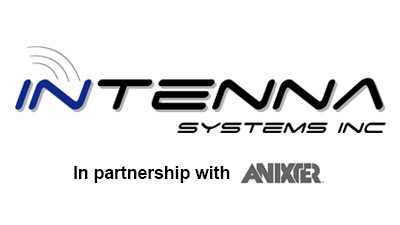Building Connectivity Now Lies In The Hands Of Property Owners. Here’s What They Can Do About It

As most cellular data usage continues to originate indoors, more building owners are noticing that their in-building connectivity is not up to par with the demands of tenants. While wireless service providers, also called carriers, once worked with buildings to strengthen cellular networks, changes in available funding have them now focusing their capital dollars on other areas of business. This has left building owners to address wireless enhancement needs without carrier assistance. Design, funding, procurement, construction and licensing of in-building systems are now the responsibility of the owner.
Building owners now have to navigate the complex world of radio and cellular frequencies on their own. They must also provide the physical infrastructure and fund the technology required to bring multiple wireless carriers’ signals inside and closer to end users. This has led some owners to adopt consumer signal amplifier products that don’t work effectively for their building types.
“Part of the confusion is that real estate professionals and enterprises need to realize that any commercial-grade solutions must be approved by the Verizons and AT&Ts of the world, even though owners have to fund the installation of this technology themselves,” Intenna Systems Director Jeff Reale said.
Intenna Systems is a wireless solutions provider that designs, builds, manages and maintains wireless networks across multiple asset classes, from commercial real estate to healthcare facilities. As more owners realize they are responsible for improving in-building connectivity, they are partnering with companies like Intenna Systems to develop a solution for improving their cellular connectivity and performance.
Education is a large part of this process. There are several product types that can improve cellular performance, but their effectiveness depends on the location in which they are deployed. Consumer signal boosters, for example, are off-the-shelf products that are supposed to boost cellular signals without causing interference with wireless networks, primarily because the power levels are severely restricted by the Federal Communications Commission.
While a relatively inexpensive technology, these boosters work best in limited areas like a home, small office or low-rise building. They don’t work as well as a commercial-grade Distributed Antenna System network in larger and more complex facilities, such as urban high-rise buildings and medical centers.

Distributed Antenna Systems come at a higher price point but offer a much more robust in-building solution. At a high level, DAS works by installing a series of antennas or access points around a targeted coverage area. These radiating components are connected to a central controller via fiber-fed remote hub units and the controller is fed signals from a direct attachment to a carrier's base station. The system expands network connectivity to the indoor environment where space is limited, and a traditional cell tower can’t be installed in the immediate vicinity.
In either case, building owners need to work with a company that understands which solutions work best for their property, Reale said.
DAS networks rely on licensed radio frequency spectra that are owned and provided by the carriers. But waiting for carriers to find the signal source funding to participate can delay in-building connectivity and upgrades.
Recently, Intenna Systems inked a third-party licensing arrangement to expedite the process. This recent partnership now provides Intenna with the additional capability to guarantee signal sources from multiple wireless carriers up front. This offers a streamlined path to connectivity without having to wait for carriers to fund signal sources from ever-decreasing annual budgets.
While some owners worry about the cost of installing robust systems like DAS, companies like Intenna Systems also educate clients on multiple financing and real estate valuation models. Intenna clients can finance a DAS installation through an operating expense model versus a capital expense model, which treats the network upgrades as a short-term cost that they can recoup faster, rather than over time under a capital expenditure.
Educating property owners about in-building network solutions comes down to providing a model for return on investment, proving that adding amenities like a reliable indoor cellular connection can bring continued value to an asset. That starts with a strong partnership.
“One of the first steps property owners should take is to partner with a company like Intenna Systems to perform a technical assessment that leads to a design package and a budgetary quote, which the company provides at no or minimal upfront cost," Reale said. "After that, Intenna's 20 years of experience in the industry helps guide our clients through the complicated environment of licensed frequencies and multiple technologies, so they can achieve a positive outcome with minimal redesign and cost impacts along the way.”
This feature was produced in collaboration between Bisnow Branded Content and Intenna Systems. Bisnow news staff was not involved in the production of this content.

